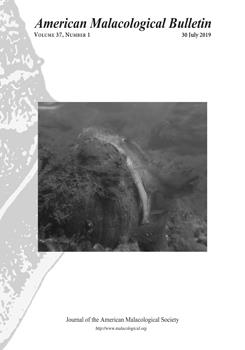Louisiana's wetlands and crops are presently under invasion by Pomacea maculata (Perry, 1810). Insight into the physiology of ampullariids is vital to informing threat assessment, developing effective control measures, and enhancing our understanding of the physiological adaptations that facilitate successful introductions of invasive species. This paper addresses the respiratory physiology and heart rate of P. maculata submersed in water, during initial and extended (aestivation) emersion in air. Invasive P. maculata in Louisiana possess fully functional lungs and gills, permitting survival in air without access to water, and reciprocally, survival in water with no access to air. The aquatic respiration rate measured as V ̇ O2 (∼19 µL/g/h) was significantly lower than the initial aerial respiration rate (∼ 63 µL/g/h) for P. maculata, while the heart rate was similar in both water (∼37 bpm) and during initial emersion in air (∼34 bpm). Small snails (< 10 g) consistently exhibited significantly higher respiration and heart rates in both air and water compared to medium (10–60 g) and large (> 60 g) snails. A substantial reduction in heart rate (86%), body weight (24%), and V̇
̇ O2 (∼19 µL/g/h) was significantly lower than the initial aerial respiration rate (∼ 63 µL/g/h) for P. maculata, while the heart rate was similar in both water (∼37 bpm) and during initial emersion in air (∼34 bpm). Small snails (< 10 g) consistently exhibited significantly higher respiration and heart rates in both air and water compared to medium (10–60 g) and large (> 60 g) snails. A substantial reduction in heart rate (86%), body weight (24%), and V̇ 02 (94%) was observed in P. maculata after 58 days of aestivation in air. Periodic changes in the rate of oxygen uptake and cardiac arrhythmia were regularly observed in snails during emersion in air.
02 (94%) was observed in P. maculata after 58 days of aestivation in air. Periodic changes in the rate of oxygen uptake and cardiac arrhythmia were regularly observed in snails during emersion in air.
How to translate text using browser tools
30 July 2019
Respiratory Physiology and Heart Rate of Pomacea maculata in Water, Air, and during Aestivation
Kristy Mueck,
Lewis E. Deaton,
Andrea Lee
ACCESS THE FULL ARTICLE

American Malacological Bulletin
Vol. 37 • No. 1
July 2019
Vol. 37 • No. 1
July 2019
apple snail
arrhythmia
gill
invasive
lung




